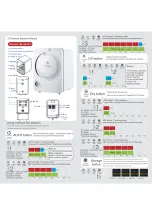
4
Setting up the Error Detector
Setting up the Error Detector - Concepts
The error detector analyzes an incoming bit stream, compares it to the
expected pattern, and locates any inconsistencies. The error detector
requires the following settings to work correctly:
•
The expected pattern
The error detector needs to "know" which data to expect so that it
can detect bit errors.
•
Correct input and output terminations to the DUT
This ensures that your DUT cannot be damaged due to incorrect
terminations.
•
Correct clock frequency
Required to recognize the bit rate in the data stream.
•
Appropriate sampling point
The sampling point defines where the error detector tries to
differentiate between 0s and 1s in the data stream. This is necessary
so that the error detector recognizes the data bits correctly.
•
Synchronization to the incoming pattern
The expected pattern must be synchronized to the incoming pattern
so that the error detector can find any discrepancies.
The error detector provides the following functions to enable you to
perform tests:
•
Automatic pattern synchronization
The error detector shifts the incoming data stream bitwise to match
it to the expected data pattern. A correct BER can only be measured
with matching patterns.
•
Error accumulation
Agilent J-BERT N4903 High-Performance Serial BERT
User Guide
s
Agilent Technologies
109
S
Summary of Contents for J-BERT N4903
Page 1: ...S Agilent J BERT N4903 High Performance Serial BERT User Guide s Agilent Technologies...
Page 68: ...2 Setting up Patterns 68 Agilent J BERT N4903 High Performance Serial BERT...
Page 158: ...4 Setting up the Error Detector 158 Agilent J BERT N4903 High Performance Serial BERT...
Page 314: ...6 Evaluating Results 314 Agilent J BERT N4903 High Performance Serial BERT...
Page 374: ...7 Jitter Tolerance Tests 374 Agilent J BERT N4903 High Performance Serial BERT...
Page 394: ...8 Solving Problems 394 Agilent J BERT N4903 High Performance Serial BERT...
Page 434: ...Index 434 Agilent J BERT N4903 High Performance Serial BERT...
















































